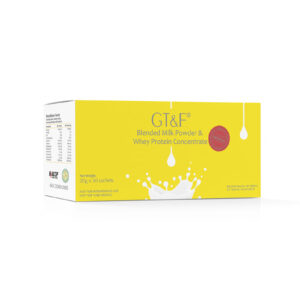6 Nutrition Tips for People with Diabetes
5 Jun 2024 | Syah

There was a 68.3% increase in the prevalence of diabetes from 11.2% in 2011 to 18.3% in 2019. A national survey report states that 3.6 million persons in Malaysia who were 18 years of age or older had diabetes in 2019, with 3.7 million cases (or 49% of cases) going undiagnosed (Akhtar S, 2022). The most common is type 2 diabetes, usually in adults, which occurs when the body becomes resistant to insulin or doesn’t make enough insulin.
Reduce your intake of free sugar.
We all know that giving up sugar may be quite difficult at first, so making modest, doable changes is a smart place to start when attempting to reduce your intake of added sugar. Replace sugar-filled beverages, fruit juices, and energy drinks with sugar-free water, plain milk, tea, and coffee. Eliminating free sugars can help you control your weight and blood glucose levels. To help you reduce back, you can always try low- or zero-calorie sweeteners (sometimes called artificial or non-sugar sweeteners). In the short run, these can also aid in weight loss if you don't replace them with other high-calorie foods and beverages.
Choose Healthier Carbohydrates.
Knowing which foods contain carbohydrates is crucial because they all have an impact on blood glucose levels. Pick the more nutritious foods that are high in carbohydrates, and watch how much you eat. A low-carb diet can help people with diabetes better manage their blood sugar levels (Zawn Villines, 17 May 2019).
These are a few nutritious foods to get carbohydrates:
- Entire grains: buckwheat, brown rice, and whole oats
- Fruit
- Vegetables
- Pulses: chickpeas, lentils, and beans
- Dairy products like milk and unsweetened yoghurt.
Consume less salt
People with diabetes are advised to limit salt (sodium). Salt intake doesn't affect blood sugar. But limiting salt may help prevent or control high blood pressure and heart disease. (Jessica Gotwals, 2024). Furthermore, all of these illnesses already come with an increased risk when you have diabetes. Aim to consume not more than 6g (one teaspoon) of salt each day. Many pre-packaged foods already have salt in them, so be sure to read food labels and select items with lower salt content. Making meals from scratch will enable you to monitor your salt intake. For an added taste boost, you may also get inventive and replace salt with various herbs and spices.
Reduce your intake of processed and red meat
You may find that you need to eat larger servings of meat to feel full while you're cutting back on carbohydrates. However, using red and processed meats, such as gammon, bacon, sausages, beef and lamb, in this way is not recommended. These are all associated with cancer and heart issues.
Consider replacing processed and red meat with these:
- pulses, including lentils and beans;
- fish;
- eggs;
- poultry, like chicken and turkey;
- unsalted nuts
Beans, peas, and lentils are excellent alternatives to processed and red meat since they are low in blood sugar and high in fibre, while also helping you feel full. Most people are aware of the health benefits of fish, but oily fish.
Consume more fruits and vegetables
Eating fruits and vegetables is known to be healthful. Aim to eat more throughout mealtimes and have them as snacks if you're feeling peckish. This can assist you in obtaining the fibre, vitamins, and minerals your body requires on a daily basis to support your health. Given that fruit contains sugar, you may be wondering if you should avoid it. No, is the response. Everyone benefits from eating whole fruit, and people with diabetes are no exception. Yes, sugar is found in fruits, but it's natural sugar. This is not the same as the added sugar, sometimes referred to as free sugar, found in cakes, chocolate, and biscuits.
Go for healthier fats
Since fat provides us with energy, we all need it in our diets. However, the effects of various fats on human health vary. Nuts, seeds, avocados, oily seafood, olive oil, rapeseed oil, and sunflower oil are foods high in healthy fats. Certain saturated fats raise blood cholesterol levels, which raises the risk of heart issues.
They are mostly present in prepared foods and animal products, such as:
- Cakes
- Pies
- Pastries
- Biscuits
- Ghee
- Butter
- Processed meat
Try baking, steaming, or grilling food instead of using oil, although it’s still a good idea to use less of it overall.
How GTF Trivalent Chromium help people with Diabetes?
The GTF complex exists in every of the human body cells. GTF chromium is the cofactor for insulin, therefore stimulates the biological activity of insulin and improve the sensitivity of insulin receptors. GTF is similar as the key for the cells. It allows glucose from bloodstream smoothly transported into cells and convert into energy. Therefore, GTF helps in metabolism.
A research by (Pei et al,. 2006) shows that GTF plays an important role in regulating one’s plasma glucose level. Supplementation of GTF chromium for 16 weeks significantly reduce fasting blood glucose level by 22 %. Besides that, chromium supplementation also able to reduce hemoglobin A1c (HbA1c) level by 0.5-1.1% (Pei et al., 2006; Huang et al., 2018). A reduction of HbA1c by 1% able to reduce the complications of diabetes (Stratton et al., 2000).
Do check out our product ranges:

GT&F® Milk Powder
A patented, clinically studied product, GT&F Milk with a combination of Trivalent Chromium, Lactoferrin, Whey Protein Concentrate and best grade New Zealand Milk Powder for a better bioavailability.
GTF Worldwide Sdn Bhd
- No. 20-2, Plaza Danau 2, Jalan 5/109F, Taman Danau Desa, 58100 Taman Desa, Kuala Lumpur, Malaysia.
- (03) 7982 9881
- (012) 483 5523
- info@gtf.com.my
